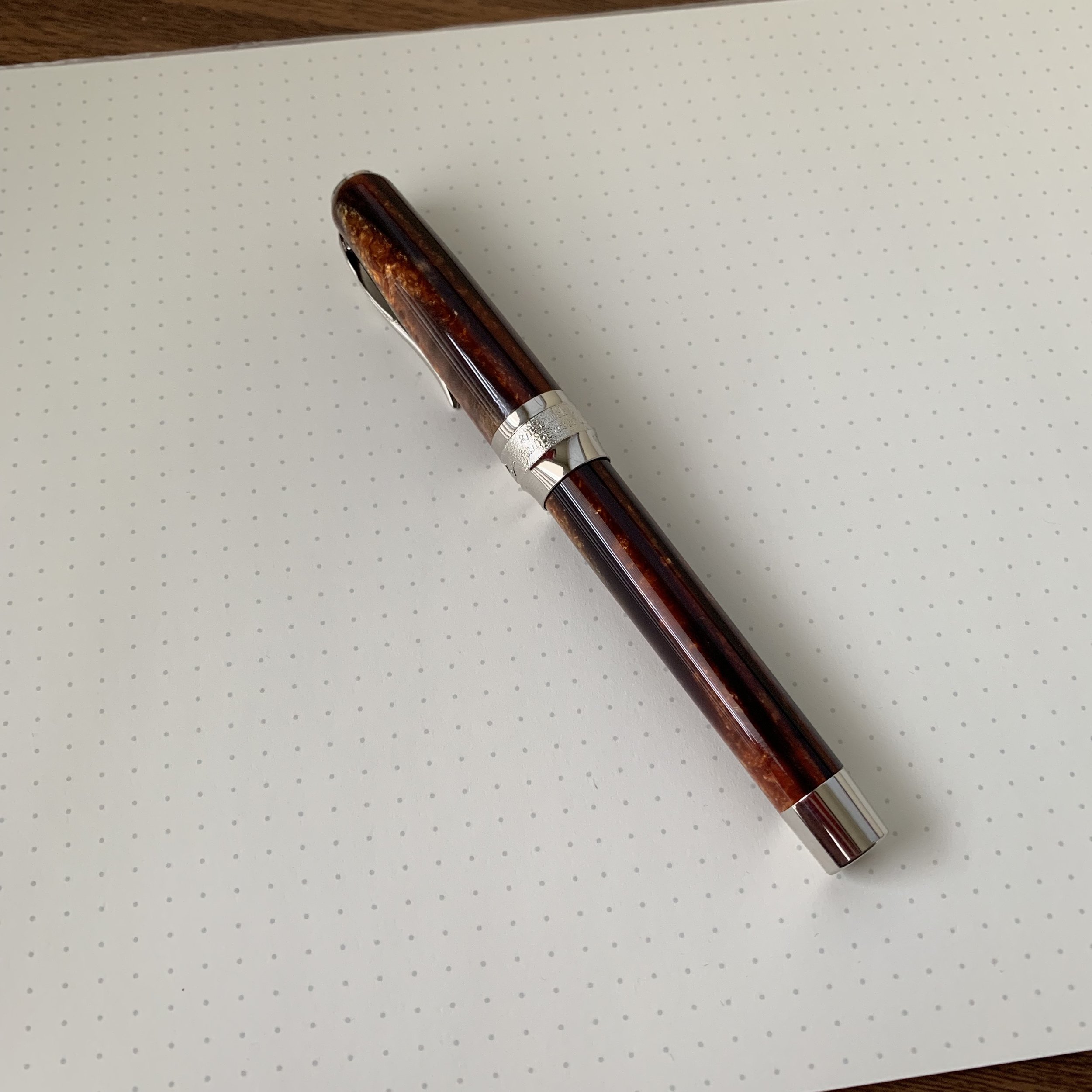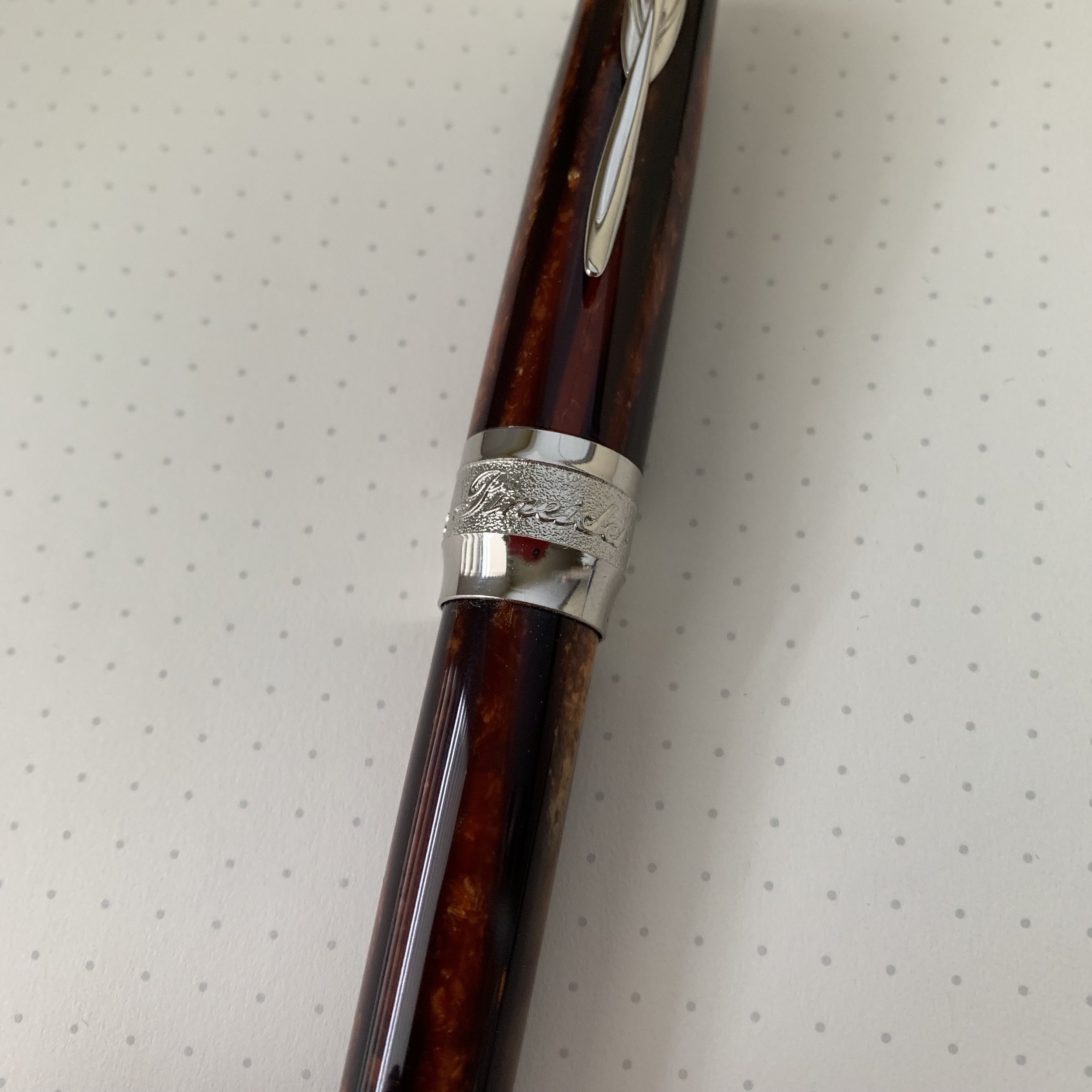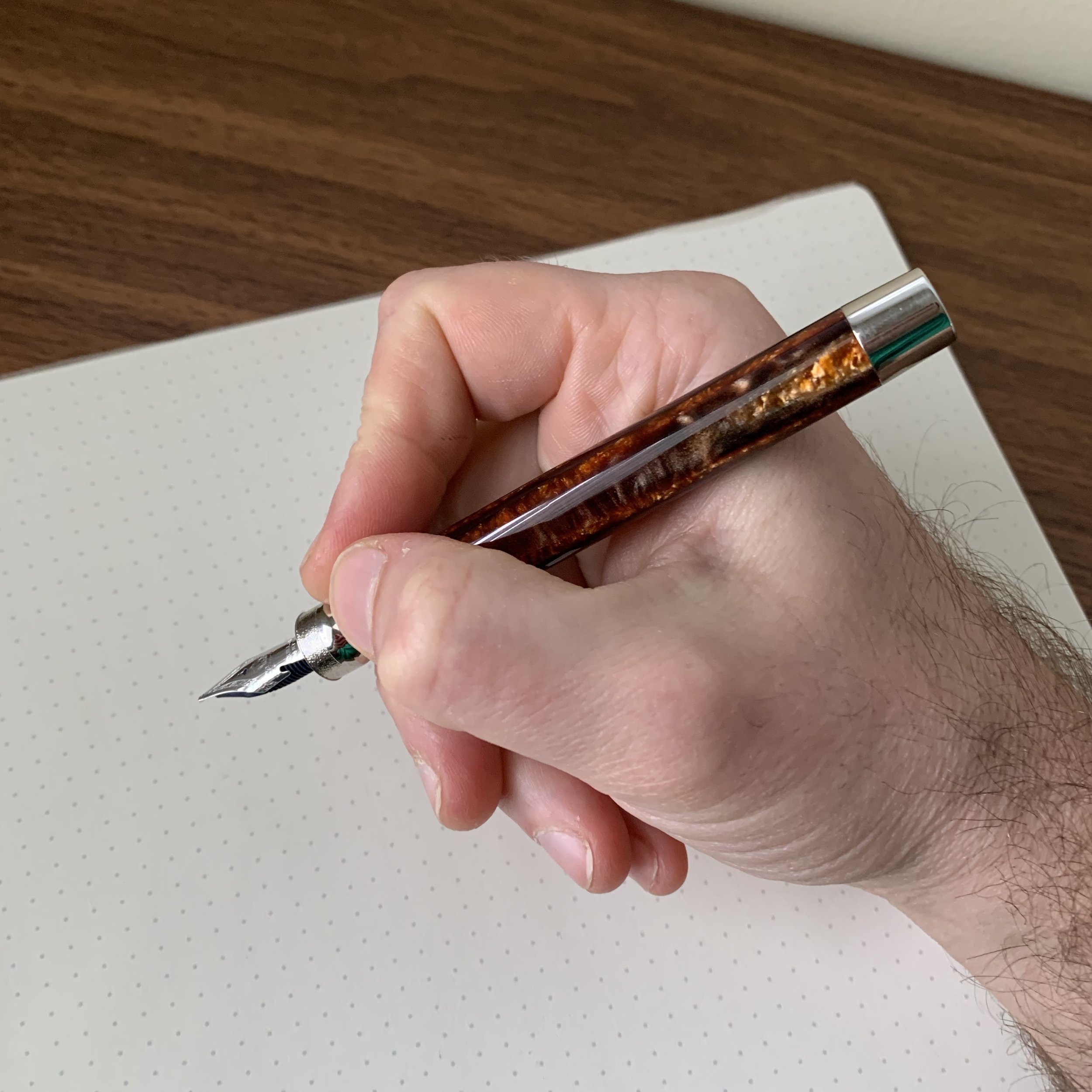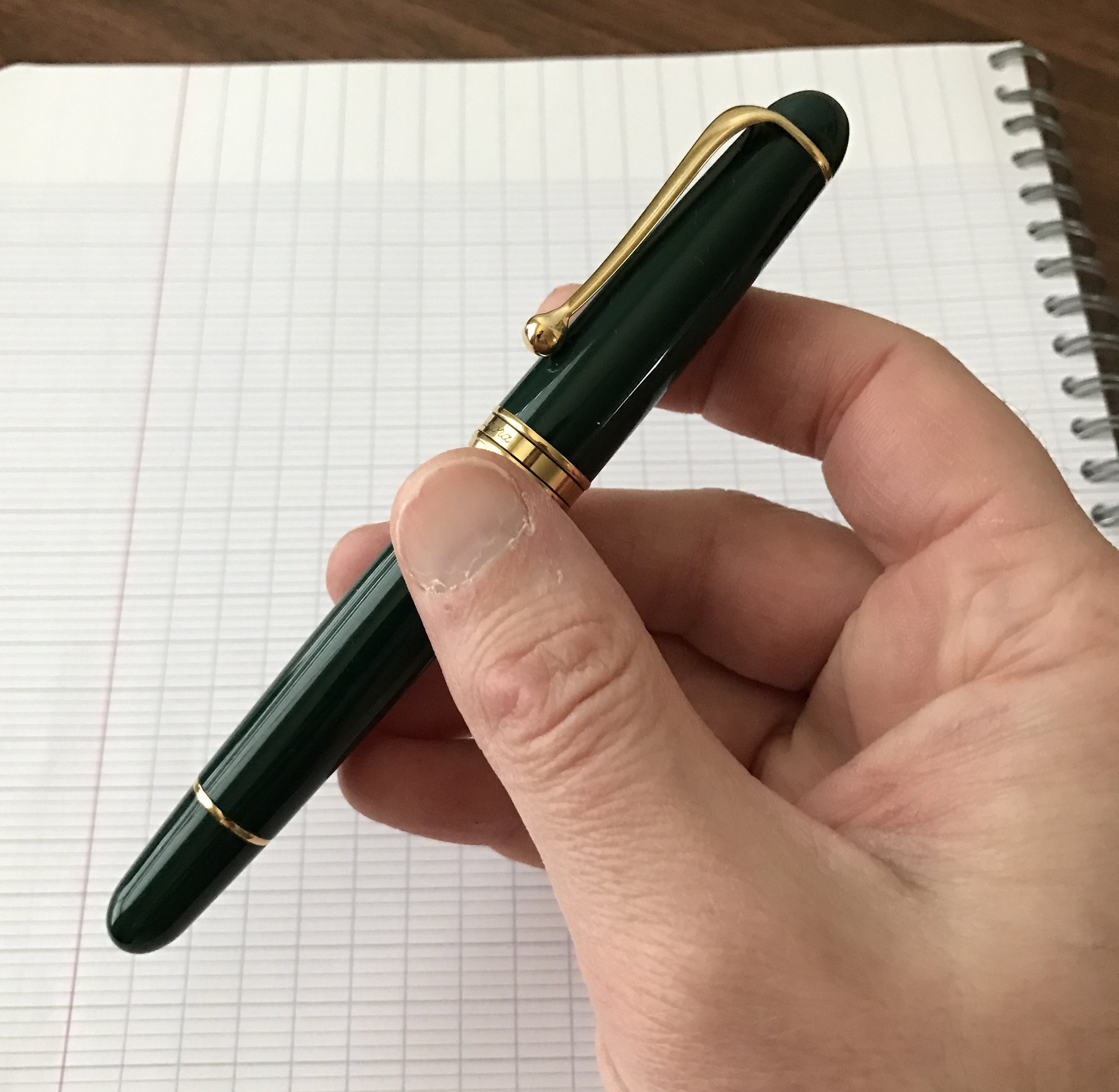The pen I'm reviewing today is part of my ongoing effort to break out my fountain pen comfort zone and try things that I wouldn't typically purchase to use at work, but rather pick up just for fun. The Good Blue is a London-based company that specializes in flexible-nib fountain pens paired with a unique feed system designed to ensure and adequate supply of ink to the nib, which is where most "modern flex" pens have underwhelmed. So how does The Good Blue R615 perform? Honestly, very well.
I absolutely love the color of the Cerakote on this pen. Read more on the history of the pen design and materials used directly on The Good Blue website.
Pen Design and Aesthetics
This particular model, the R615 "Titanium Blue" is a special edition collaboration between our friends at Vanness Pens and The Good Blue. The pen features a streamlined, 6082 Aluminum body with "Titanium Blue" Cerakote coating, paired with a section machined from untreated CZ121 brass. The body of the pen is deceptively comfortable - I expected the step down from the pen body to the section to be too steep and severe for my taste, but as it turns out the grip area is long enough that this is not an issue.
The brass section will patina due to both your grip and exposure to ink. Note the porous feed and compare to the photo of the un-inked pen below.
While the R615 has no clip, the streamlined body features a facet on one side, which acts as a roll-stop. It's a simple, practical design. The brass components, per the company's website, are untreated and "precision textured with a surface roughness for ergonomic grip." Note that the untreated brass will absolutely patina, and may also change color due to exposure to ink. This doesn't bother me at all, and I find it to be part of the charm of the pen.
The pen doesn’t post, given the design, but is very well balanced in the hand.
Nib and Writing Experience
As I mentioned above, the main issue that people run into with so-called "modern flex pens" is ink starvation. Namely, modern plastic feeds have a difficult time maintaining ink flow sufficient to write broader lines as you flex the nib from extra-fine to double-broad. The Good Blue appears to have solved this issue by using in-house polymer feeds made from an absorbent material that not only absorbs the ink to keep the feed saturated but changes color to match the ink (helpful if you, like me, often forget what ink you have in a pen.)
The engraving on the nib says “For the love of flex.” These nib units are in JoWo-threaded housings and therefore interchangeable with pens from other brands.
The Good Blue offers several different nib options. There are, of course, standard stainless steel nibs available, but with a company known for flex, I had to try the titanium flex nib. Once broken in, the titanium nib lays down a ton of ink, and line width ranges from a bouncy fine/medium, writing with little pressure, to around a double broad if I really try to push things. (By “broken in,” I mean that the nib will soften with use. Mine was fairly stiff when I first received it, but has gradually opened up to where I can get significantly more line variation.) I have experienced zero "railroading" as long as I use moderately wet inks, and have only had issues with a couple of drier or extremely saturated shimmer inks.
Writing sample on Write Notepads paper with Iroshizuku Asa-Gao fountain pen ink.
Takeaways and Where to Buy
I didn't intend to purchase this pen, but after playing around with the demo model at the Vanness Table at the Arkansas Pen Show (dangerous table neighbors there), I couldn't pass it up. My R615 has remained inked ever since March, and while I don't write with it every day, it sees regular use in my journal and written correspondence, as well as when I'm doodling around with ink - something I've tried to do more of for the simple joy of it. The Good Blue makes one of the best modern "stock" flex nibs I've used, and I'd like to try their calligraphy and 14k nibs in the future.
Because this particular pen is exclusive to Vanness Pens, you can only purchase it through them (though it is currently out of stock as of the time of writing). Vanness does carry other versions of the R615, including the acetate and Ultem versions, as well as a selection of the standard and flex nibs. Prices start at $140 and increase depending on your choice of materials and nib, with the pen shown here coming in at $220 for the special finish plus the titanium flex. The pens and various specialty nibs (including 14k flex and untipped "Calligraphy Flex") can also be ordered directly from The Good Blue, though they will ship from the U.K.
I purchased this pen from Vanness Pens with my own funds for my own collection, though I received a discount for review purposes. This post does not contain affiliate links or paid advertising. The Gentleman Stationer is supported entirely by purchases from the T.G.S. Curated Shop and pledges via the T.G.S. Patreon Program.






